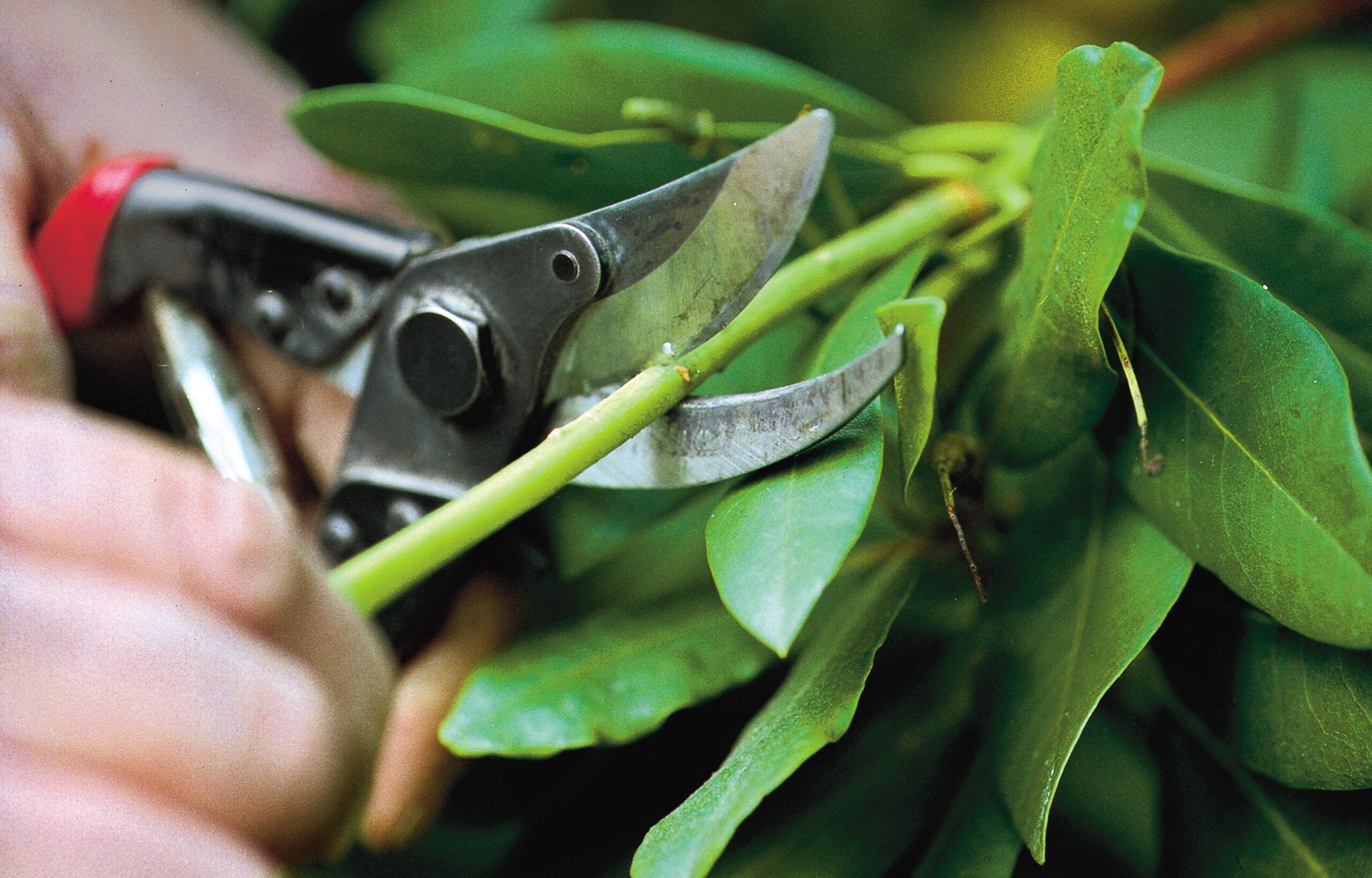Pruning helps shape plants, promotes healthy growth, and prevents disease. Here, we show you a few simple pruning techniques and how to apply them to your property’s small trees and shrubs.
Essential Pruning Tools
Before pruning, you’ll need the right tools. Here are some essential pruning tools we suggest investing in:
- Hand pruners: Hand pruners are perfect for cutting small branches and stems. They come in two main types: bypass pruners and anvil pruners. Bypass pruners work like scissors and are ideal for most pruning tasks. They make clean cuts that heal quickly. Anvil pruners have a single cutting blade that closes onto a flat surface and is better suited for cutting dead or thick branches.
- Hedge shears: Hedge shears shape hedges and shrubs with multiple small stems. They’re not suitable for cutting thick branches but are excellent for fine-tuning the appearance of plants.
- Loppers: Loppers are similar to hand pruners but have long handles that provide more leverage for cutting thick branches. They’re ideal for branches that are too large for hand pruners but too small for a saw.
- Pole pruners: Pole pruners are the tool of choice for high branches that are out of reach. These pruners have a cutting head attached to a long pole, enabling you to prune without needing a ladder.
- Pruning saws: Pruning saws are necessary for cutting branches that are too thick for loppers. These saws come in various lengths and tooth configurations, allowing you to choose one that best suits your needs.
Basic Pruning Techniques
Pruning correctly will make your plants healthier and last longer. The best technique depends on the plant type and your desired outcome.
Heading
Heading cuts shorten the length of branches. This method encourages new growth from the cut edge, promotes fuller growth, and shapes the plant. Excessive heading can lead to a dense and bushy structure that limits light penetration, so use it sparingly.
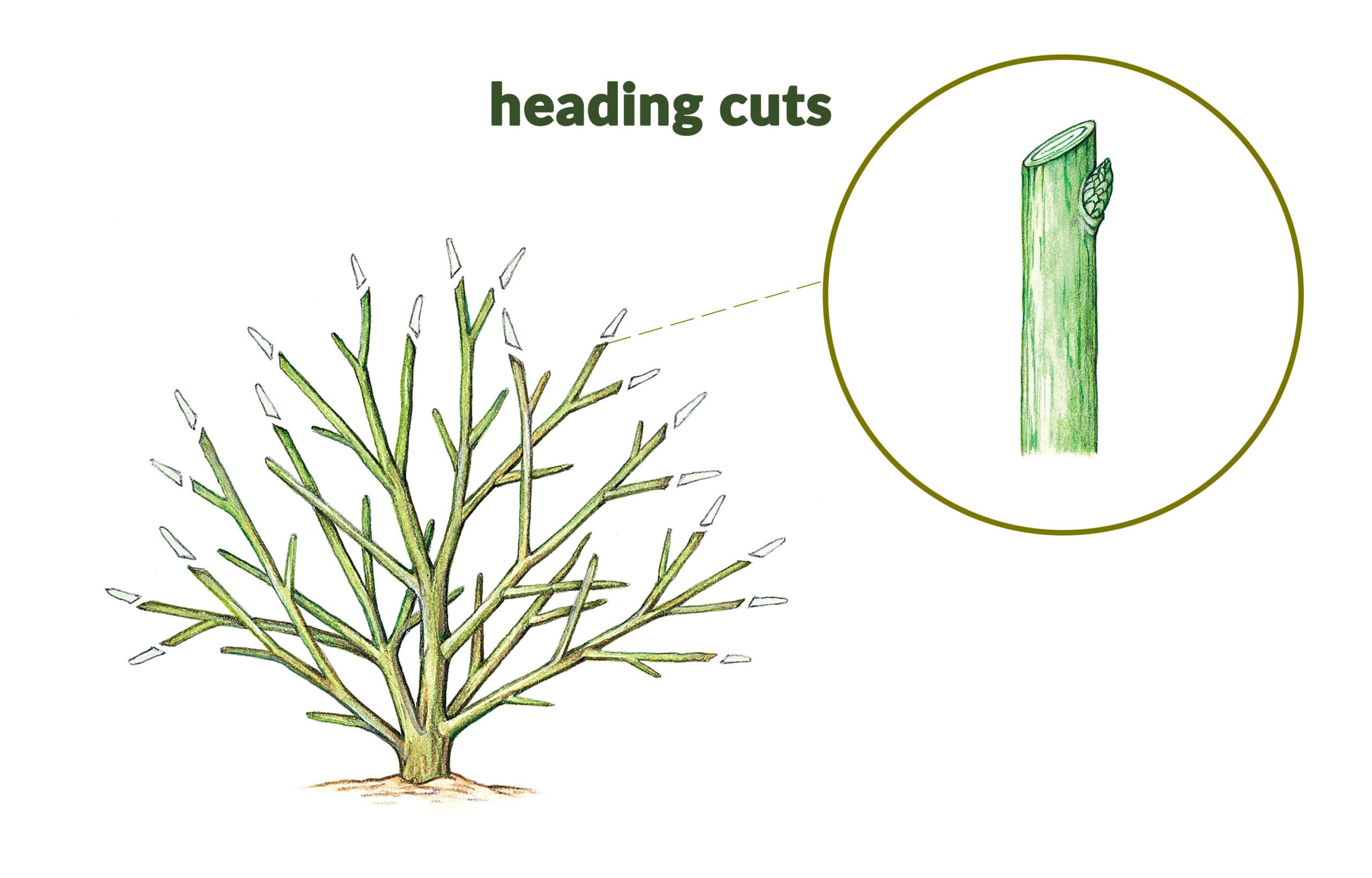
Pinching
Pinching is a hand technique used primarily on shrubs. By pinching off the tips of new growth, you can encourage bushier development and a compact shape.
Shearing
Shearing involves cutting back the outer edges of shrubs to create a uniform shape. Avoid over-shearing, leading to a dense outer shell with sparse growth inside.
Thinning
Thinning involves selectively removing branches to reduce density. This technique increases light and air penetration, vital for the plant’s health. Cutting branches back to their point of origin improves structure without changing the plant’s natural shape.
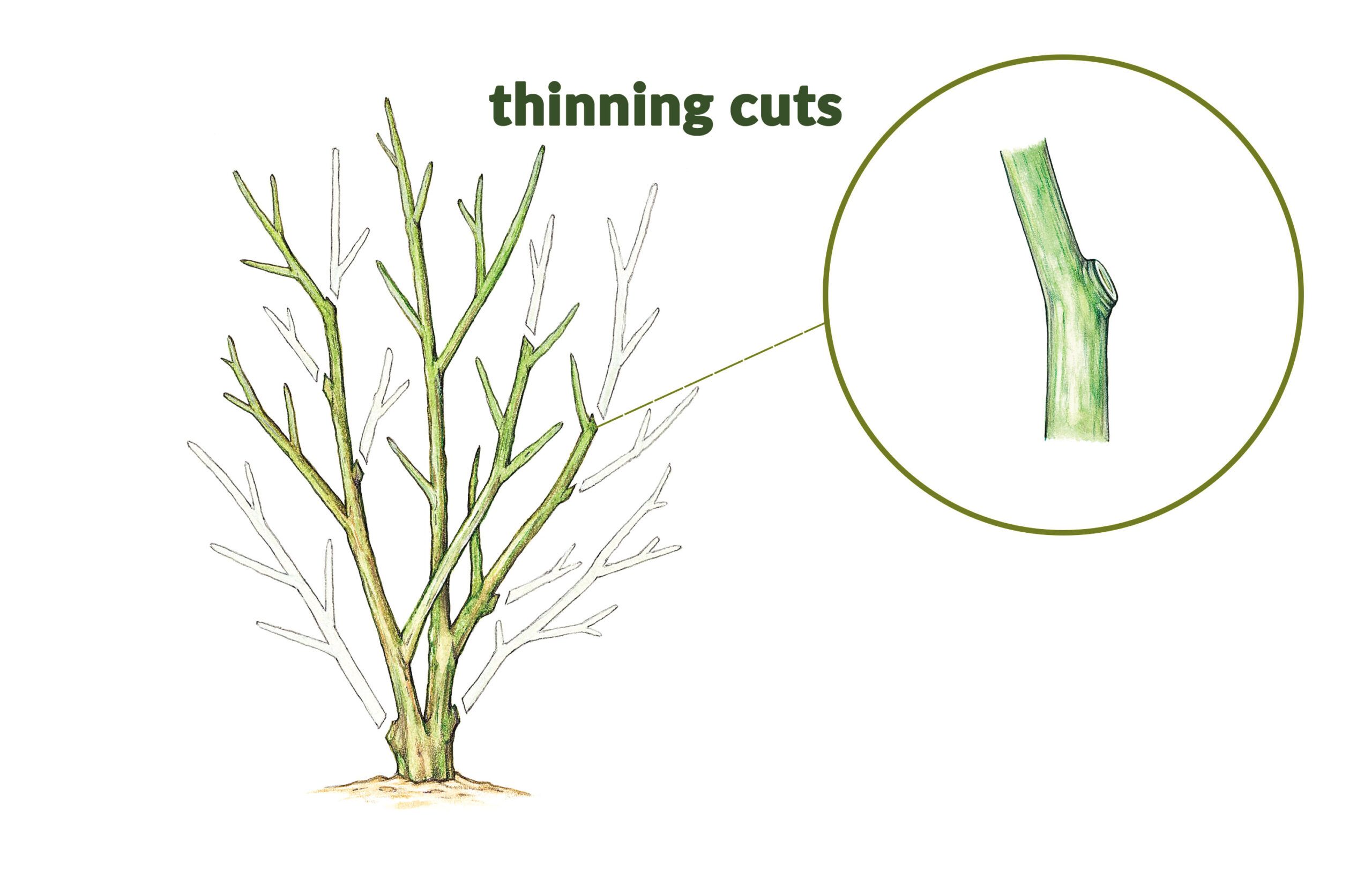
Timing Your Pruning
Different plants follow different pruning schedules. You should know when to prune each type:
- Deciduous trees: Prune your deciduous trees, which lose their leaves in the fall, in late winter or early spring, before new growth begins. This timing allows the wounds to heal quickly and reduces disease risk.
- Evergreen trees and shrubs: Evergreen trees and shrubs retain foliage throughout the year, and you can prune them in late winter or early spring. You can also lightly prune in mid-summer, but avoid heavy pruning since it can stress the plant.
- Flowering trees and shrubs: When to prune flowering trees and shrubs depends on when they bloom. For spring-flowering plants, prune immediately after flowering. This process allows the plant to set buds for the next year’s blooms. Prune summer-flowering plants in late winter or early spring since they bloom on new growth. When in doubt, This Old House landscape contractor Roger Cook suggests postponing pruning until right after the plant flowers.
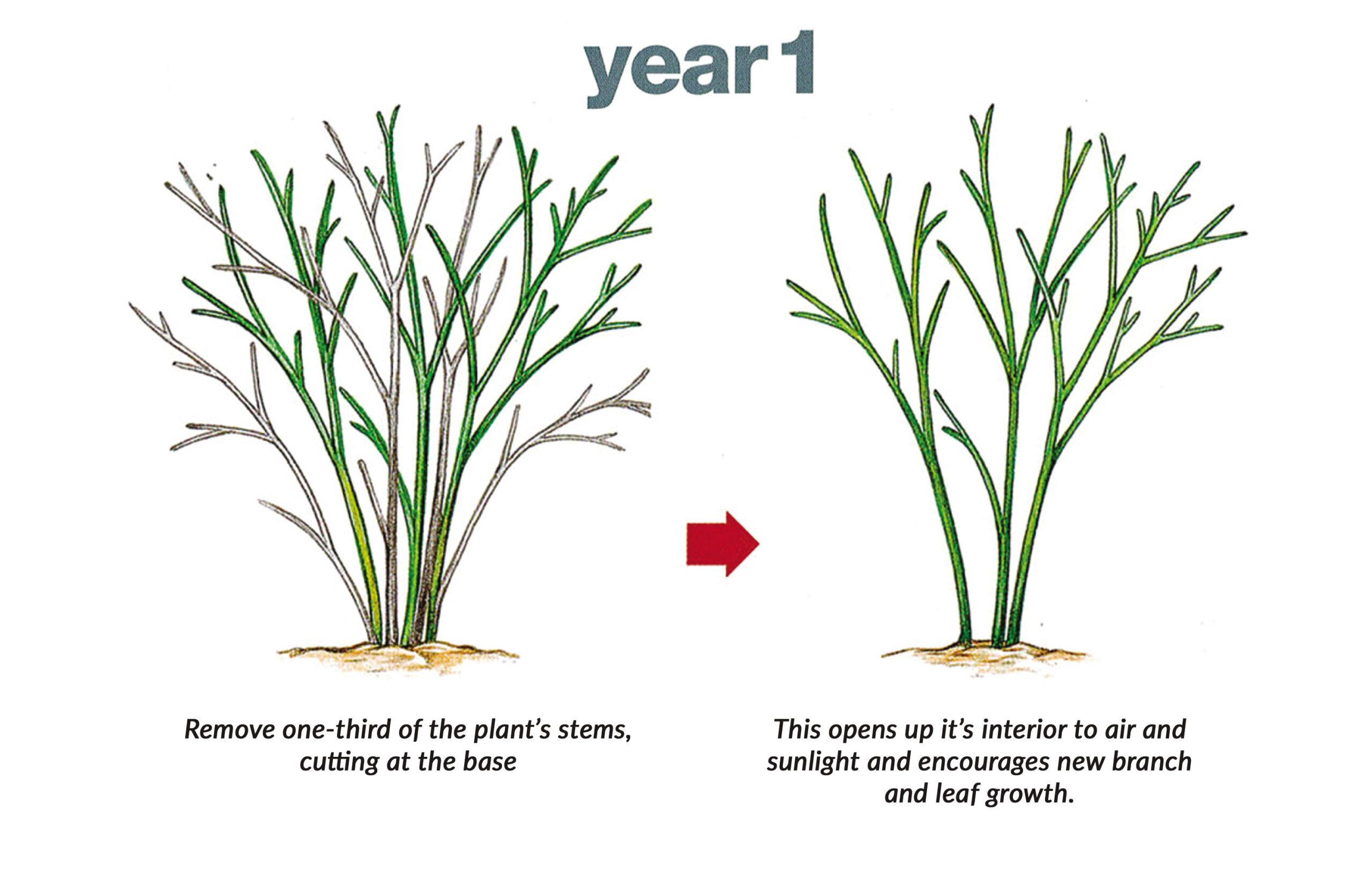
Pruning Trees
Avoid pruning a young or newly planted tree—it needs as many leaves as possible to produce the food required for good root growth. Remove only dead, broken, or injured branches and those that cross or rub each other. Once the tree is a few years old, shape it gradually over several years to maximize foliage and flowering. Mature trees require only occasional pruning to maintain their structure and appearance.
- Fruit trees: Pruning fruit trees is essential for fruit production and keeping the tree a manageable size. Focus on opening the canopy to allow light and air to reach the inner branches. Remove any water sprouts (vigorous shoots that grow vertically from branches) and suckers (shoots that grow from the base of the tree) to encourage fruiting.
- Ornamental trees: Pruning ornamental trees, like Japanese maples, enhances their natural beauty. Avoid heavy pruning, as this can spoil the tree’s shape. Instead, focus on removing dead, diseased, or crossing branches and lightly thinning the canopy.
- Trees with suckering habits: Some trees, like lilacs and sumacs, tend to produce suckers from their base. Regularly remove these suckers to maintain the tree’s shape and prevent it from spreading.
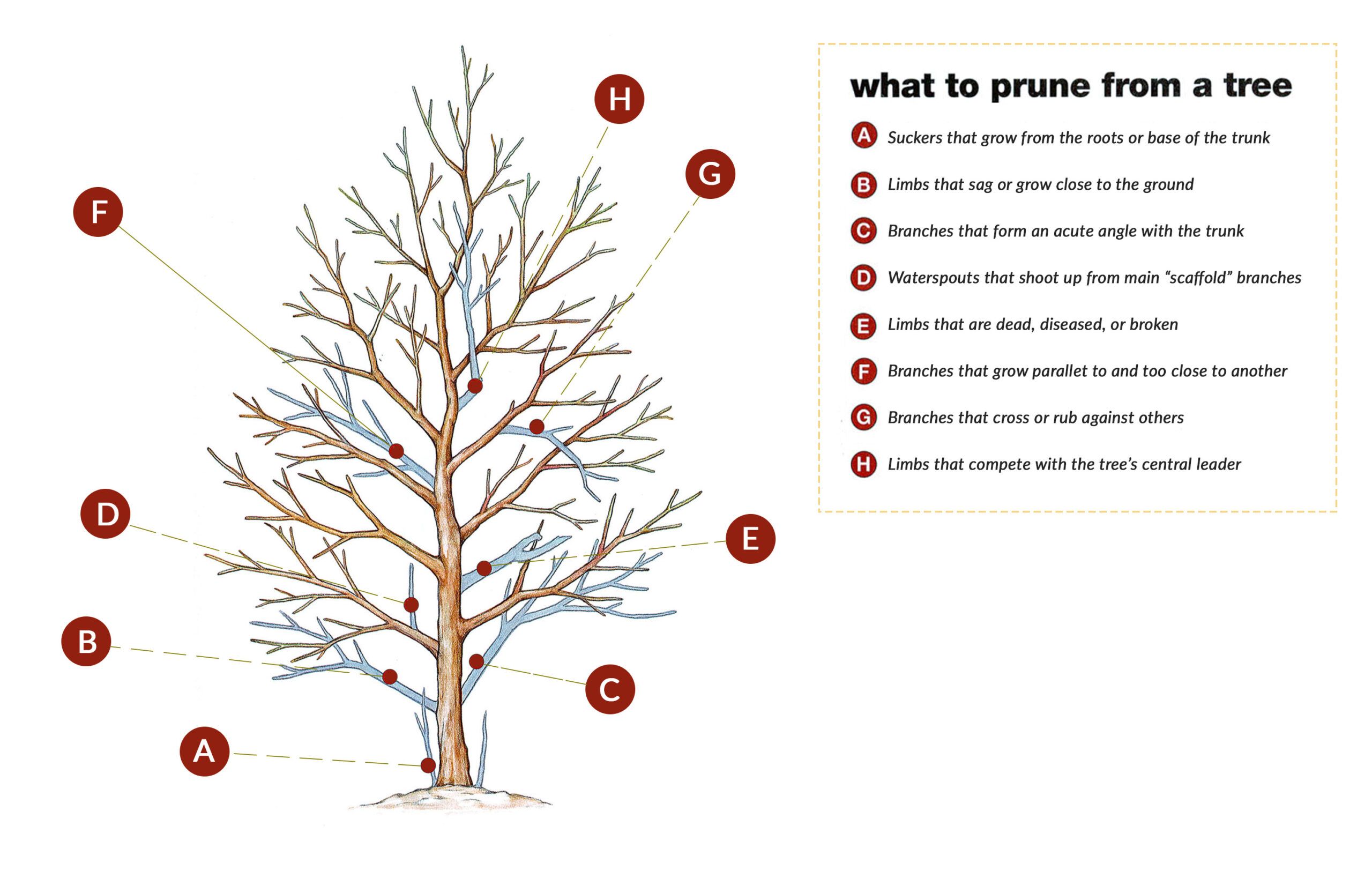
Pruning Conifers
Conifers, such as pine and spruce, have growth patterns different from those of deciduous trees and require a distinct pruning approach.
- Random-branching conifers: Random-branching conifers, including spruce, fir, and yew, can be pruned by shortening the length of the branches. Avoid cutting into the older wood. These plants don’t readily produce new growth from old wood.
- Whorled-branching conifers: Whorled-branching conifers, such as pine, produce new growth from the tips of the branches. Prune the new growth by half in late spring or early summer to maintain shape and size.
Pruning Flowering Shrubs
Flowering shrubs can add color and texture to your garden. Proper pruning encourages healthy growth and abundant blooms.
- Maintenance pruning: Maintenance pruning shrubs involves removing dead, diseased, or damaged branches and thinning out crowded areas to maintain the shrub’s shape and health.
- Rejuvenation pruning: For older or overgrown shrubs, rejuvenation pruning can help restore their vigor. This approach involves cutting back one-third of the oldest branches to ground level annually for three years. This process encourages new growth and gradually renews the plant.
Pruning Older or Neglected Shrubs
Older or neglected shrubs may require more intensive pruning to rejuvenate them. Assess the plant’s condition and determine the best approach to restore its health and appearance.
Assessing the Shrub
Before pruning, look closely at the plant to identify dead, diseased, or damaged branches. Consider the shrub’s overall shape and size and decide how much pruning is needed.
Hard Pruning
Sometimes, hard pruning may be necessary to rejuvenate a neglected shrub. This process involves cutting the entire plant back 6–12 inches above the ground. While this can be a drastic measure, it can encourage vigorous new growth. Check the shrub is healthy and capable of withstanding heavy pruning before proceeding.
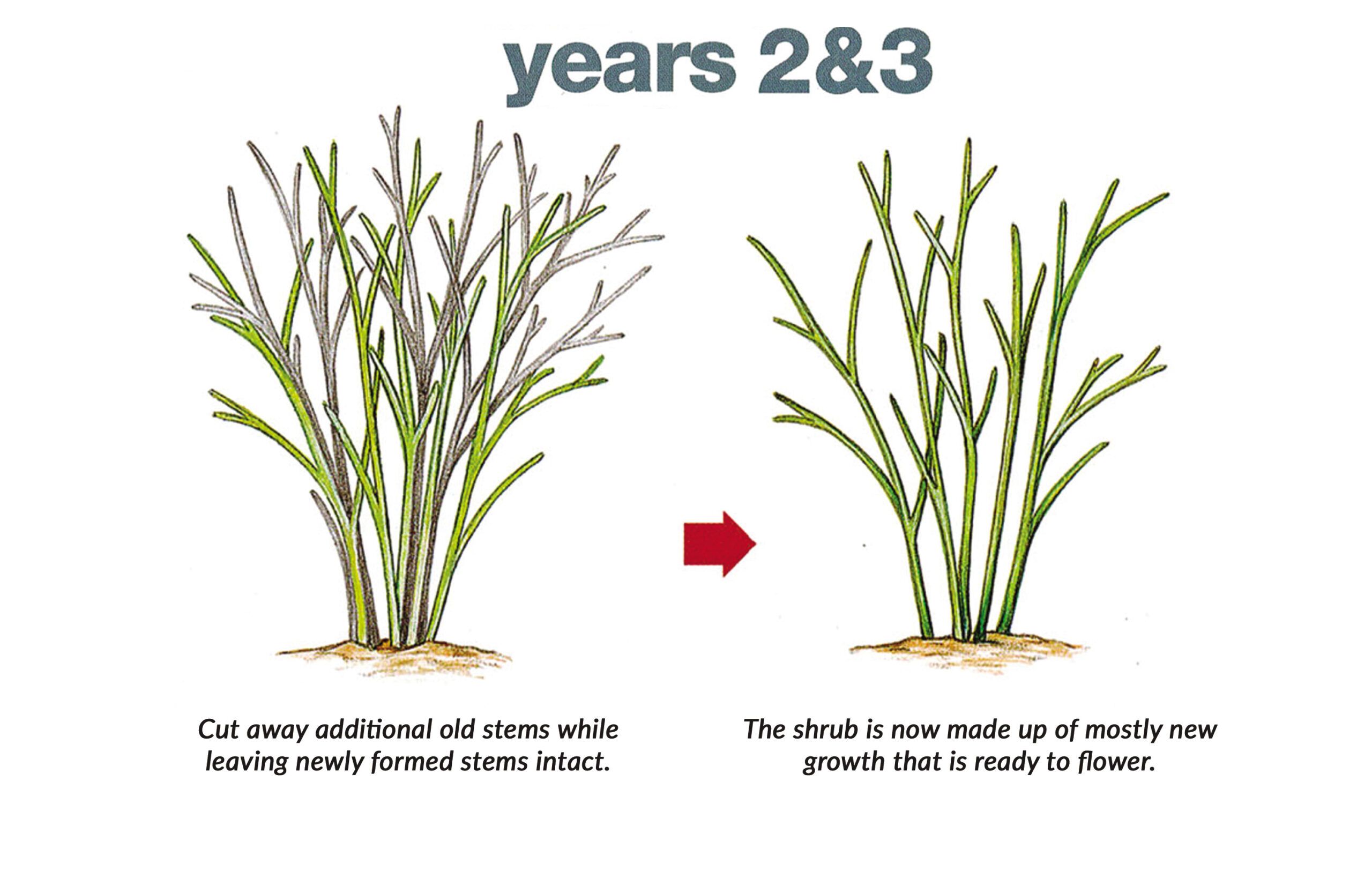
Common Mistakes To Avoid
Pruning can significantly benefit your plants, but avoid these common mistakes that cause harm.
- Making improper cuts: Making improper cuts can damage the plant and cause disease. Always use sharp, clean tools and cut just outside the branch collar. This is the swollen area where the branch attaches to the trunk. Avoid leaving stubs, as these can become entry points for pests and diseases.
- Over-pruning: One of the most common mistakes is over-pruning. Removing too much foliage can stress the plant and reduce its ability to photosynthesize. Aim to remove no more than 10%–20% of the plant’s total growth in a single pruning session.
- Pruning at the wrong time: Pruning at the wrong time can negatively impact the plant’s health and flowering. Make sure you know the appropriate pruning schedule for each plant type and adhere to it.
Post-Pruning Care
Pruning alone isn’t enough to keep your plants healthy. You must give your plants the proper care to help them recover and thrive. With our tips below, you can maintain a beautiful and healthy garden.
Watering and Mulching
After pruning, check that the soil remains moist but not soggy. Mulching around the base of the plant can help retain moisture and regulate soil temperature.
Fertilization
Fertilizing your plants after pruning can encourage healthy new growth. Choose a balanced fertilizer and apply it according to the manufacturer’s instructions. Be careful not to over-fertilize. This leads to excessive, weak growth.
Monitoring for Pests and Diseases
Watch your plants for signs of pests and diseases. Pruning creates wounds that can be entry points for pathogens, so it’s important to address any issues quickly. Regularly inspect your plants and take action if you notice any problems.
Resources
Landscape Contractor:
Roger Cook
K&R Landscape
Burlington, MA
781-272-6104
For more information:
The Pruning Book by Lee Reich
Taunton Press
Newtown, CT
800-477-8727
www.taunton.com
